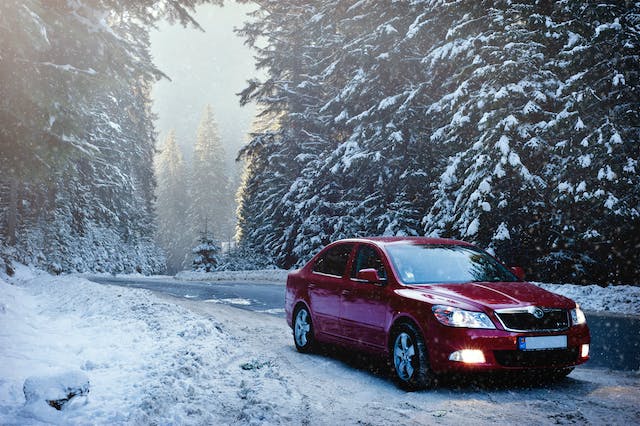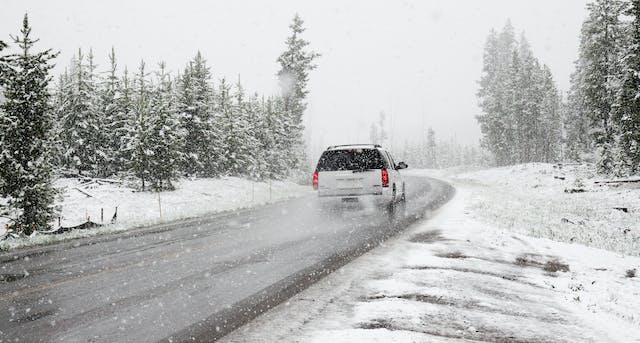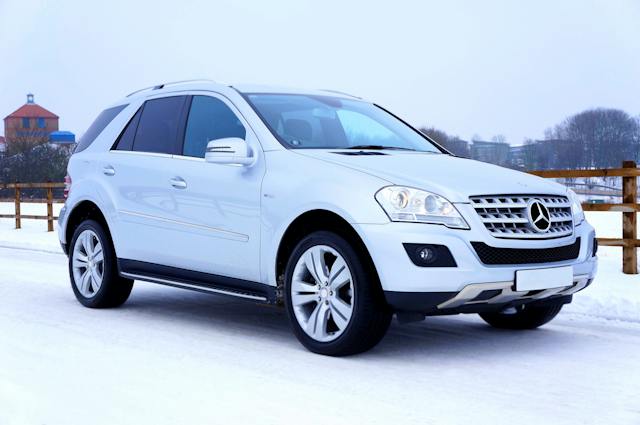In Lakewood, Colorado, the winter season brings unique challenges to vehicle maintenance, particularly in the realm of auto glass replacement. The colder temperatures and inclement weather conditions not only affect the integrity of the auto glass but also the process of its repair and replacement. This comprehensive guide delves into the specific considerations and best practices for auto glass replacement in winter, ensuring that vehicle owners in Lakewood are well-equipped to maintain the safety and functionality of their vehicles during these colder months.
1. Understanding Glass Expansion and Contraction
The phenomenon of glass expansion and contraction is more pronounced during the winter, primarily due to the wide temperature variations between day and night. This can lead to existing cracks or chips in your auto glass worsening, creating a safety hazard. Timely repair or replacement before the onset of winter is crucial to prevent minor damages from escalating into bigger problems.
- Temperature Effects: The glass expands in warmer temperatures and contracts in colder ones, which can cause existing damage to worsen.
- Preventive Measures: Proactive repair of chips and cracks in the fall can prevent them from expanding in winter.
2. Importance of Quality Sealants in Cold Weather
Choosing the right sealants for auto glass replacement in winter is vital. In cold weather, standard sealants may not perform effectively, which can lead to issues like leaks and drafts. High-quality sealants are formulated to withstand cold temperatures and provide a secure, weather-tight seal, which is essential for the longevity and efficacy of the auto glass replacement.
- Sealant Selection: Use sealants specifically designed for cold weather to ensure a durable bond.
- Leak Prevention: High-quality sealants are crucial to prevent leaks and drafts that can occur due to poor sealing in cold conditions.
3. Dealing with Snow and Ice on Auto Glass

Snow and ice accumulation on auto glass is not only a visibility hazard but can also contribute to further damage. Before replacement, it’s essential to remove any ice or snow gently, as forceful removal can scratch the glass or worsen existing cracks. After replacement, proper techniques for clearing snow and ice, such as using a plastic scraper and de-icing solutions, are crucial to maintain the integrity of the new auto glass.
- Gentle Removal: Use a plastic scraper and de-icing solutions to remove ice without causing damage.
- Post-Replacement Care: Avoid using hot water or metal tools on new glass to prevent thermal shock and potential damage.
4. Temperature Effects on Auto Glass Replacement
The ambient temperature during auto glass replacement plays a significant role in the success of the installation. Cold weather can extend the curing time of adhesives and sealants, necessitating a longer waiting period before the vehicle can be safely used. Vehicle owners should be prepared for this extended downtime and should not rush the curing process, as doing so can compromise the effectiveness and safety of the new installation.
- Extended Curing Time: Adhesives and sealants take longer to set in cold temperatures, requiring longer waiting periods.
- Installation Planning: Schedule replacements considering the extended curing time to avoid any inconvenience.
5. The Role of Professional Installation
Professional installation becomes even more crucial during winter. Experienced technicians are familiar with the challenges posed by cold weather and can ensure that auto glass is replaced correctly and safely. When selecting a service provider in Lakewood, it’s important to choose one with a strong track record in winter installations, as they will have the necessary expertise and equipment to handle the unique demands of cold-weather auto glass replacement.
- Expertise and Equipment: Professionals have the right tools and knowledge to handle winter-specific challenges.
- Choosing a Service Provider: Select a provider with experience in cold-weather installations and positive customer feedback.
6. Winter Driving and Auto Glass Safety

Winter driving in Lakewood poses additional risks, emphasizing the need for well-maintained auto glass. Compromised auto glass can affect the vehicle’s structural integrity and safety, particularly in the event of an accident. Regular inspections and prompt repair of any damages are key to ensuring safety on icy and snow-covered roads. Not only does this improve visibility, but it also contributes to the overall protection of the vehicle’s occupants.
- Regular Inspections: Check for and address any damage before it worsens in winter conditions.
- Safety on the Road: Well-maintained auto glass is crucial for structural integrity and safety during winter driving.
7. Insurance Considerations for Auto Glass Replacement
Understanding the coverage of your auto insurance policy regarding auto glass repair and replacement is important, especially in winter. Policies vary, and in some cases, weather-related damages may be covered differently. It’s advisable to review your policy and understand what is covered before proceeding with a replacement. Additionally, some insurance companies may recommend specific service providers; it’s important to ensure these providers are experienced with winter conditions.
- Policy Review: Check your insurance coverage for auto glass repair and replacement.
- Service Provider Recommendations: Ensure recommended providers have experience with winter replacements.
8. Choosing the Right Glass for Winter Conditions
The type of auto glass used can significantly impact its performance in winter. When replacing auto glass, it’s essential to opt for materials that are designed for durability and safety in harsh weather conditions. This might include options like laminated or tempered glass, which offer enhanced safety features. A discussion with your auto glass specialist can help you make an informed choice based on your vehicle’s specific needs and the typical winter conditions in Lakewood.
- Material Durability: Choose glass types that are known for their durability and resistance to winter conditions.
- Safety Features: Consider additional safety features like laminated or tempered glass for enhanced protection.
9. Preparing Your Vehicle for Auto Glass Replacement
Preparing your vehicle for auto glass replacement can facilitate a smoother and more efficient service. This involves cleaning the vehicle, particularly around the damaged area, and removing any items that might obstruct access to the glass. Additionally, communicating any specific concerns or issues with the service provider beforehand can help tailor the replacement process to your vehicle’s specific needs, ensuring a successful outcome.
- Vehicle Cleaning: Clean the area around the damaged glass to facilitate easy access.
- Communication with Service Provider: Discuss any specific needs or concerns prior to the service.
10. Post-Replacement Care and Maintenance

After your auto glass has been replaced, proper care and maintenance are crucial. This includes following the technician’s recommendations, such as avoiding car washes and high-pressure water for a specified period. Regular inspections of the new glass, particularly its seal and edges, can help identify any issues early on. Prompt attention to these issues can prevent further damage and ensure the longevity and effectiveness of your auto glass replacement.
- Follow Technician’s Recommendations: Adhere to care instructions like avoiding car washes and high-pressure water.
- Regular Inspections: Check the new glass for signs of wear or leakage, particularly in the initial weeks after installation.
FAQs
Winter weather can lead to auto glass contraction and expansion due to temperature changes. This can cause existing cracks or chips to worsen, increasing the risk of breakage.
Yes, it is safe to replace auto glass in cold weather. Modern adhesives and technologies are designed to handle low temperatures, although the process may require a heated environment and longer curing times.
It’s recommended to wait for the adhesive to properly set before driving, which might take longer in cold weather. Your service provider can give you a specific waiting time based on the conditions.
The combination of low temperatures and the heating of your car’s interior creates significant temperature differences across the glass, causing stress that makes cracks spread faster.
Delaying replacement can lead to increased risks, such as reduced visibility, compromised vehicle integrity, and the possibility of a small crack turning into a full-blown break.
The cost of auto glass replacement generally remains consistent throughout the year. However, some providers might offer winter-specific discounts or promotions.
To maintain the seals, avoid high-pressure washing and harsh chemicals. Regularly check the edges for leaks or drafts, especially after exposure to severe cold.
Yes, but it’s advisable to use them cautiously. Start with a lower temperature setting and gradually increase it to avoid thermal shock to the new glass.
Content reviewed and published by SLP AutoGlass Editorial Team.

